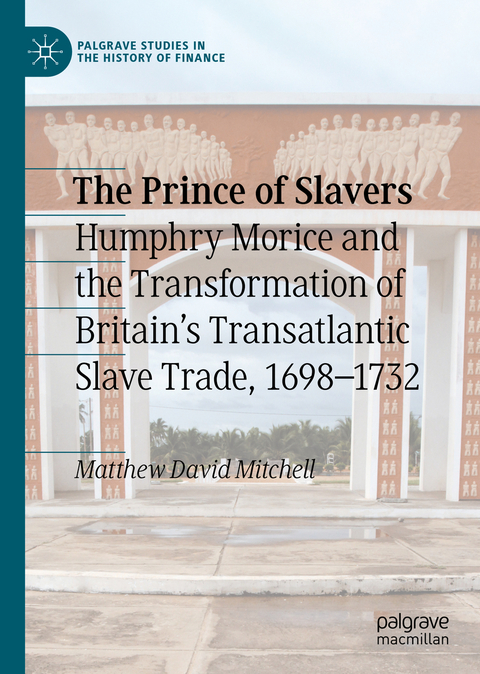
The Prince of Slavers
Springer International Publishing (Verlag)
978-3-030-33838-1 (ISBN)
Much scholarship on the British transatlantic slave trade has focused on its peak period in the late eighteenth century and its abolition in the early nineteenth; or on the Royal African Company (RAC), which in 1698 lost the monopoly it had previously enjoyed over the trade. During the early eighteenth-century transition between these two better-studied periods, Humphry Morice was by far the most prolific of the British slave traders. He bears the guilt for trafficking over 25,000 enslaved Africans, and his voluminous surviving papers offer intriguing insights into how he did it.
Morice's strategy was well adapted for managing the special risks of the trade, and for duplicating, at lower cost, the RAC's capabilities for gathering information on what African slave-sellers wanted in exchange. Still, Morice's transatlantic operations were expensive enough to drive him to a series of increasingly dubious financial manoeuvres throughout the 1720s, and eventually to large-scale fraud in 1731 from the Bank of England, of which he was a longtime director. He died later that year, probably by suicide, and with his estate hopelessly indebted to the Bank, his family, and his ship captains. Nonetheless, his astonishing rise and fall marked a turning point in the development of the brutal transatlantic trade in enslaved Africans.
Matthew David Mitchell is Assistant Professor of British History at Sewanee: The University of the South, USA. His research on the transatlantic slave trade, and on the early modern history of business more generally, has appeared in Enterprise and Society; The Journal of the Historical Society; and Itinerario.
Chapter 1: Introduction.- Chapter 2: Prologue to Morice: Anglo-African Trade under the Royal African Company Monopoly.- Chapter 3: Morice's Peers: The Early British Separate Traders.- Chapter 4: Morice's Beginnings:1704-1719.- Chapter 5: Morice at the Peak, 1720-1727.- Chapter 6: Morice's Catastrophe, 1728-1731 and Beyond.- Chapter 7. Conclusion.- Chapter 8. Morice's Africa Voyages: An Annotated List.
"Mitchell presents facts and conclusions ... succeeds in making us think of questions for further research. I recommend this book to those who are interested in the transatlantic slave trade and in business history in general." (Jose Rowell Corpuz, EH Net, eh.net, December, 2023)
“Mitchell presents facts and conclusions … succeeds in making us think of questions for further research. I recommend this book to those who are interested in the transatlantic slave trade and in business history in general.” (Jose Rowell Corpuz, EH Net, eh.net, December, 2023)
| Erscheinungsdatum | 07.02.2020 |
|---|---|
| Reihe/Serie | Palgrave Studies in the History of Finance |
| Zusatzinfo | XVIII, 317 p. 2 illus. in color. |
| Verlagsort | Cham |
| Sprache | englisch |
| Maße | 148 x 210 mm |
| Gewicht | 565 g |
| Themenwelt | Geisteswissenschaften ► Geschichte ► Regional- / Ländergeschichte |
| Wirtschaft ► Allgemeines / Lexika | |
| Wirtschaft ► Betriebswirtschaft / Management ► Finanzierung | |
| Wirtschaft ► Volkswirtschaftslehre | |
| Schlagworte | Africa • African produce • Anglo-African trade • Bank of England • British slave traders • Commercial history • Fraud • Human Trafficking • Humphry Morice • Royal African Company • Slavery • slave ships • slave trade • The Middle Passage • Transatlantic Slave Trade |
| ISBN-10 | 3-030-33838-X / 303033838X |
| ISBN-13 | 978-3-030-33838-1 / 9783030338381 |
| Zustand | Neuware |
| Informationen gemäß Produktsicherheitsverordnung (GPSR) | |
| Haben Sie eine Frage zum Produkt? |
aus dem Bereich


